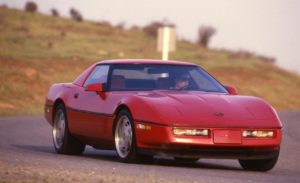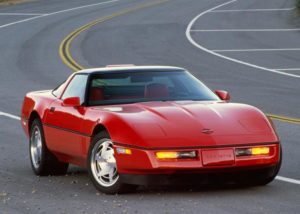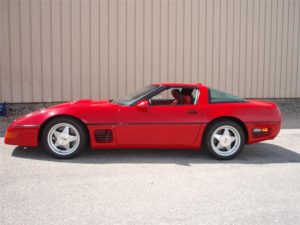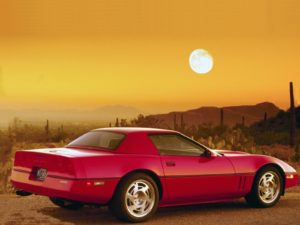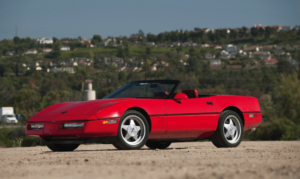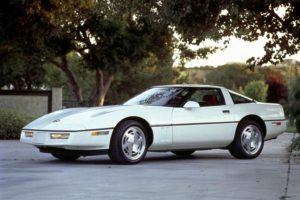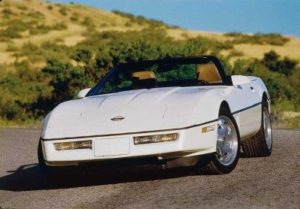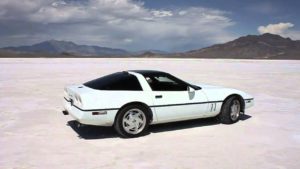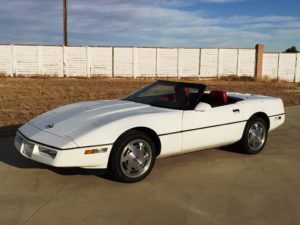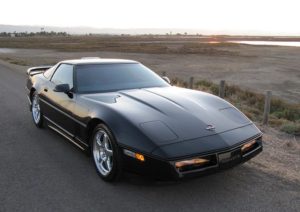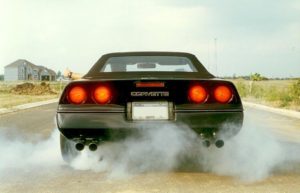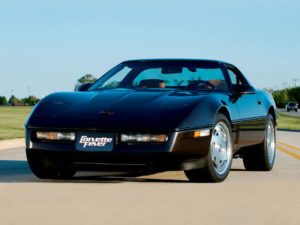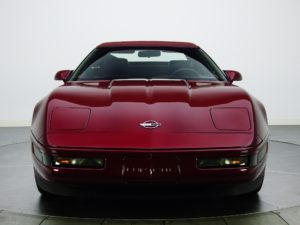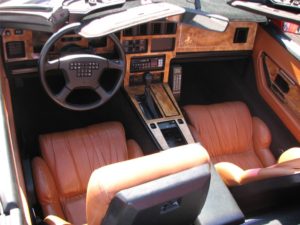Since its introduction in 1984, the C4 had undeniably evolved into a sports car that could hold its own as a contender amongst some of the staunchest sports car competitors from around the world.
With each passing model year, on-going modifications to the engine, drive train, suspension, and steering had transformed the C4 Corvette from a car that was recognized more for its handling than its performance into a machine which had successfully mated technology and horsepower.
Pricing: $31,545.00 (Coupe), $36,785.00 (Conv.)
Engine options: 350CI 240/245 Horsepower, Tuned-Port Fuel Injected L98 V8 Engine
Transmission: 4-speed automatic (standard), 6-speed manual (optional)
Top speed: 152mph
Units Produced: 26,412
Available Colors: White, Medium Blue Metallic, Dark Blue Metallic, Black, Dark Red Metallic, Bright Red, Gray Metallic, Charcoal Metallic
Highlights of the year:
As early as 1988, the rumblings and rumors of a new ZR-1 model Corvette had begun to circulate. With fuzzy spy photographs and a growing rumble amongst the Detroit automotive community, there had been a growing speculation that a new “King of the Hill” Corvette was on its way.
Designed in a joint effort between Chevrolet and Germany’s ZF (Zandfabrik Friedrichshafen), the new six-speed transmission would prove to be a massive improvement over the never-popular Doug Nash 4+3 manual transmission which had been a part of the C4 Corvette program since its introduction in 1984.
The arrival of the new six-speed transmission would be met with unquestioning approval, although its introduction would carry with it a certain amount of controversy as well.
While the equipment previously associated with the optional Z52 became standard on all Corvettes, future Corvette owners were presented with an all-new suspension option. RPO FX3 featured a selective ride and handling package. Priced at $1,695, and only available on Corvettes also equipped with the Z51 option, the FX3 system adjusted shock damping by adjusting suspension firmness levels specified by a console-mounted switch.
Three suspension modes were available to select from during vehicle operation: touring, sport, or competition, and each was designed to suit the mood of the driving condition. Within each setting, the damping rate increased with the car’s speed in six, twenty-five-mile-per-hour steps, from 25 miles per hour to 150 miles per hour. A stylized, removable, bolt-on hardtop was introduced for the 1989 model year as well. Made of fiberglass-reinforced polyester resin over rigid urethane, it was molded around a steel/aluminum “cage” and coated with polyurethane inside and out. A cloth headliner and window weather-stripping were included, as well as an electrically heated rear window (which plugged into a special rear-deck socket.)
For the first time in several years, the 1989 model year would actually see an increase in the total sales numbers of the Chevrolet Corvette. Even with the knowledge that the ZR-1 Corvette’s arrival was certain in 1990, Chevrolet sold a total of 26,412 Corvettes in 1989, of which nearly 10,000 units were convertibles.
Photos of 1989 Corvette:
Sources:
https://www.corvsport.com/1989-c4-corvette/
https://www.corvsport.com/1989-c4-corvette-image-gallery/
